When Caregiving is Over: The Well-Being of Caregivers
of Parents with Dementia
By Marla Berg-Weger, Ph.D., LCSW, Doris McGartland Rubio, Ph.D.
Susan Tebb, Ph.D., LSW and Lisa A. Parnell, MSW
Gaining insights into the former caregiver’s well-being can provide valuable information for working with caregivers before and during their caregiving experiences. Broadening the scope of the caregiving continuum to include the pre- and post-caregiving phases re-defines caregiving as a multi-faceted and complex phenomena.
Former caregivers find that the period following the death of their family member can be at one in which they reflect on and process the caregiving experience. The grief experience of caregivers of elders suffering from a dementing illness is a unique one, in many ways. Due to the loss of the elderly family member’s cognitive and physical function over a period of time, caregivers report that they often begin the grieving process before the actual death. For this group of caregivers, a sense of relief may occur when the care-recipient dies.
In a recent study of daughters who had cared for an elderly parent who suffered from Alzheimer’s disease or a related disorder, but had since died, researchers report two critical findings that can benefit professionals working with family caregivers:
1) Well-being and ability to meet one’s basic needs are both higher for former caregivers than for non-caregivers. These findings suggest that, while caregiving can be stressful, the negative effects are not sustained into the post-caregiving phase. The authors speculate that post-caregivers may develop effective management skills during their caregiving experience that are carried over into the post-caregiving phase. Professionals and caregivers alike know that caring for a family member suffering from a dementing illness such as Alzheimer’s disease, while stressful, can equip them with skills to better meet their basic needs.
Learning that former caregivers possess a higher level of well-being than those who have not provided care can guide the professional in working with caregivers who are in the pre-caregiving and active caregiving phases. This finding builds on the concept that self-care and attaining a balance in one’s life is critical at all times, but particularly important for the person who is anticipating and/or engaged in caring for a relative with dementia. Working with caregivers and pre-caregivers to mobilize and utilize resources and support systems and develop a management approach to caregiving may additionally contribute to their enhanced post-caregiving well-being.
2) Post-caregivers’ income levels are higher than the comparison group. This finding suggests several potential explanations. First, former caregivers’ income may have improved following the death of the loved one as a result of decreased expenditures related to caregiving, thus relieving the financial drain often associated with caring for a chronically ill person. Secondly, because caregivers tend to be older than non-caregivers, they may have accumulated a higher level of income and/or financial resources. Lastly, this finding suggests that the caregiver sought out paid employment, having been relieved of the role of caregiver.
Professionals working in the area of caregiving and caregivers themselves can use such a research finding to engage pre-, active and post-caregivers in discussions about financial management. Such dialogue may include the development of a budget, financial planning, employment status and/or seeking financial support for outside sources.
In applying the lessons learned from this research effort, the following strategies may be helpful for professionals and caregivers striving to promote well-being among caregivers at all stages of caregiving from a strengths-based perspective:
1) Assessment—Conduct regular and ongoing assessments of caregiver well-being. The Caregiver Well-Being Scale is a tool that can be used with individual caregivers and multiple members of a caregiving team at various points along the caregiving continuum. The scale can highlight the pre- and current caregiver’s strengths and resources, while, at the same time, aid the professional and the caregiver in developing strategies for change. Using the scale on a routine basis can help the caregiver(s) realize improvements and areas for continued work. For the former caregiver, the scale can be a working assessment of his/her navigation through the post-caregiving and bereavement period.
2) Intervention—Strengths-based interventions aimed at enhancing the caregiver’s well-being can flow from the ongoing assessment. Professionals and caregivers can determine the most viable ways in which to operationalize the intervention(s). Priorities may be altered with changes in the care-recipient and/or caregiver status and external environment; therefore, practitioners should re-visit the assessment and intervention process on a regular basis. Examples include activities related to:
Establishing realistic goals and expectations related to caregiving
Developing and creating assets and resources of the caregiver, care-recipient and support system
Confronting challenges to well-being (obstacles and weaknesses)
Identifying formal and informal needs and ways to access help
Prioritizing self-care goals and strategies for achieving those goals
Feelings about being a caregiving, to include positive and negative
Time management in caregiving and, in general
Ways caregiver spend his/her leisure time
The future—life beyond caregiving (social, emotional and financial)
3) Evaluation—Evaluative strategies should be woven through the caregiver intervention process to assist the professional and the caregiver in determining progress toward achievement of goals. The professional may further find that evaluating caregiver interventions can aid in identifying program needs and innovations. Using the wisdom and experience of the current and former caregiver can strengthen the services provided for the caregiving community.
--------------------------------------------------------------------------------
Marla Berg-Weger, Ph.D., LCSW is Associate Professor, Saint Louis University School of Social Service. Doris McGartland Rubio, Ph.D. is Associate Professor
Saint Louis University Department of Research Methodology. Susan S. Tebb, Ph.D., LSW is Associate Professor, Dean Saint Louis University School of Social Service and Lisa A. Parnell, MSW is Graduate Research Assistant Saint Louis University School of Social Service.
1 This research was funded by the Alzheimer’s Disease and Related Disorders Program, University of Missouri, Columbia, Missouri. 2 This article is an excerpt from the original article entitled, “Comparing the well-being of post-caregivers and non-caregivers,” American Journal of Alzheimer’s Disease and Other Dementias, 16(2), 97-101. 3Corresponding Author: Saint Louis University School of Social Service, 3550 Lindell Boulevard, St. Louis, MO 63103; 314/977-2726 (Telephone); 314/977-2581(Fax); bergwm@slu.edu (e-mail).
Wednesday, January 13, 2010
Saturday, January 2, 2010
Women Gain Most From Long Term Care Planning

By AARP Education & Outreach
Women are more likely than men to experience the need for long-term care. Planning early for retirement—and any long-term care you may need—is one of the smartest decisions you can make.
There's just no stopping American women, especially those who are part of that dynamic force of 60 million 45- to 64-year-olds whose influence is evident in every thread of the nation's tapestry. You're independent vocal women who expect to have it all and often find yourself challenged to do it all—at home, in the workplace, and in the community. Add to that the demands of caring for aging parents, and it's no wonder that you have little time to slow down to take care of yourself, including developing personal and financial plans for your long-term care.
What is Long-term Care?
It's a common name that many are hard-pressed to define, but think of long-term care as the support you may need down the road simply to go about daily life. This kind of care can include changes to make your home more accessible, safe, and comfortable; technology that prolongs independence; or services that offer help with meals, transportation, and personal care.
Long-term care also includes medical care such as rehabilitation services or visits from a nurse. The need for these kinds of services can last several months, years, or until the end of life. Many people receive long-term care at home or through adult-day programs and other community services. Others move into supportive housing with meals and housekeeping, assisted living for people who still have a measure of independence but need help with personal care, or a nursing home for those who can no longer care for themselves.
Why Women?
Research shows that you’re more likely to have a need for long-term care than men. Here's why some experts consider this challenge a major issue for women of the boomer generation.
• Women live longer. According to AARP's Public Policy Institute, women make up more than two-thirds of Americans age 85 or older. Those who reach 65 can expect to live an average of 20 more years, outliving men by about five years.
• Women have fewer resources. Women often have drastically lower incomes than men, especially women who have gone through divorce, widowhood, job loss, and who have served others as caregivers, reports the Women's Institute for a Secure Retirement. Almost half of women 75 or older live alone. On average, says AARP, their income is only three-quarters of what older men make—and less than half of what older couples bring in.
• Women are more likely to need long-term care. About 79 percent of 65-year-old women will need some long-term care during their lifetime, finds Georgetown University's Health Policy Institute. On average, these women will end up needing 3.7 years of care. Men age 65 are likely to need about 2.2 years of care over the rest of their lives.
• Many women aren't planning for the future. An AARP report on whether middle-age women are ready for retirement warns that many of this generation—even those on the verge of retiring—don't know how much income they'll need and what costs they'll need to cover.
• Long-term care is expensive. In 2009, the average national cost for assisted living was more than $34,000 a year, according to the annual Genworth Cost of Care Survey. The yearly cost of a private room in a nursing home was nearly $75,000, and costs for home-health aides averaged almost $19 an hour. AARP's Long-Term Care Cost Calculator can help you figure out the cost of care by state.
• You'll likely pay out-of-pocket. Many people mistakenly believe that Medicare and private health insurance pay for long-term care. In reality, Americans pay for most long-term care themselves until their savings become so depleted that they qualify for Medicaid. But Medicaid often means fewer choices, especially as states face budget crises. In most states, the majority of Medicaid funds for long-term care go toward institutional providers. Yet, AARP finds that most people prefer to receive care in their homes or through community programs.
• You may never need long-term care, but your loved one might. So the knowledge you gain planning for yourself can also make it easier for you to help the people in your life. According to a survey by the National Alliance for Caregiving and AARP, six out of 10 family caregivers are women. As a caregiver, you are more likely than a man to provide 40 or more hours of care a week.
• Caregiving affects your wallet and your job. According to AARP, more than 60 percent of family caregivers who are women say they've had to make career sacrifices to accommodate caregiving. This often means cutting back on work hours, passing up promotions, or leaving the workforce entirely.
Why Now?
You're part of a generation uniquely poised to redefine retirement, using your current earning power to save and invest wisely for the future. You still have time to build and expand support networks—on the job and through family, friends, community, and faith-based institutions—that can help you and those around you. Planning ahead increases your options and keeps you in charge of decisions that affect your life. It’s important for you to know the costs of long-term care options and how they might cover your choices through savings, investments, insurance, or other resources. The more your generation of women plans today, the more retirement, lifestyle, and financial choices you'll have later.
For more information about planning for long-term care, visit www.aarp.org/ltc. Decide to plan for long-term care, create a plan that works for you, and share it with your loved ones. Let AARP help you Decide. Create. Share.SM
Getting Started--What You Need to Know About Caring for Elder Parents
The Washington State Department on Aging and Disabilities Services provides helpful information on how to get started—when you feel it’s time to step in and help your elder parent.
Here is the link and excerpts from an overview on their website:
http://www.aasa.dshs.wa.gov/pubinfo/help/
Are You Caring for a Loved One?
This section will help you understand the basics of finding and getting services for an adult who needs help with care. This would include such things as meals, transportation, daily personal care, house and yard work.
There are also state programs that help pay for food, shelter, medical or general expenses, or offer reduced rate healthcare coverage. Learn more.
Finding care can seem complicated and even overwhelming when you first start looking. The key is to find knowledgeable people who can help you. The information included here can help you sort through what you need to know and do to find these people.
When first beginning to look for care for an adult, you will need to figure out:
• what additional care is needed now or soon;
• who to call to find out what help is available in your area;
• whether you can get the care needed at home or will need residential care; and
• how to pay for it.
Did You Know ?
It’s never too late to make simple lifestyle changes and stay independent longer. Learn more.
What Additional Care is Needed
The first step is to understand what care or additional support is needed. It is a good idea if everyone involved (the adult who needs more care/support and his/her loved ones) can sit down and talk about the current situation. Learn more about having this conversation.
It is also helpful to have an understanding of the types of care that is available. These are often referred to as services. Services can help with things the person is having difficulty with including:
• physical care (e.g. getting dressed, preparing meals, assistance with medications, help with personal hygiene, getting in or out of the bed, tub, toilet or the house);
• taking care of the house or apartment (e.g. light housekeeping, shopping, laundry);
• transportation (e.g. to doctor’s appointments, shopping);
• staying socially active and connected to others in the community.
See the Care Needs Checklists to help guide you through these possible care needs. Learn more about the types of services that help an adult remain at home.
A professional care manager (e.g. nurse or social worker) can also help evaluate the current situation. If you would like professional help, ask for some referrals when finding out what help is available in your area.
Do you know someone preparing to leave a hospital, nursing home, or other health care setting? The CDC has developed a Planning for Your Discharge (PDF) checklist of important things patients and caregivers should know in order to plan for a safe discharge from a health care setting.
How to use this information
Make a list of the care needs required now and soon. This list will help you communicate the kind of care, services or programs you are looking for. Though helpful, having this list is not a requirement to call for help.
Here is the link and excerpts from an overview on their website:
http://www.aasa.dshs.wa.gov/pubinfo/help/
Are You Caring for a Loved One?
This section will help you understand the basics of finding and getting services for an adult who needs help with care. This would include such things as meals, transportation, daily personal care, house and yard work.
There are also state programs that help pay for food, shelter, medical or general expenses, or offer reduced rate healthcare coverage. Learn more.
Finding care can seem complicated and even overwhelming when you first start looking. The key is to find knowledgeable people who can help you. The information included here can help you sort through what you need to know and do to find these people.
When first beginning to look for care for an adult, you will need to figure out:
• what additional care is needed now or soon;
• who to call to find out what help is available in your area;
• whether you can get the care needed at home or will need residential care; and
• how to pay for it.
Did You Know ?
It’s never too late to make simple lifestyle changes and stay independent longer. Learn more.
What Additional Care is Needed
The first step is to understand what care or additional support is needed. It is a good idea if everyone involved (the adult who needs more care/support and his/her loved ones) can sit down and talk about the current situation. Learn more about having this conversation.
It is also helpful to have an understanding of the types of care that is available. These are often referred to as services. Services can help with things the person is having difficulty with including:
• physical care (e.g. getting dressed, preparing meals, assistance with medications, help with personal hygiene, getting in or out of the bed, tub, toilet or the house);
• taking care of the house or apartment (e.g. light housekeeping, shopping, laundry);
• transportation (e.g. to doctor’s appointments, shopping);
• staying socially active and connected to others in the community.
See the Care Needs Checklists to help guide you through these possible care needs. Learn more about the types of services that help an adult remain at home.
A professional care manager (e.g. nurse or social worker) can also help evaluate the current situation. If you would like professional help, ask for some referrals when finding out what help is available in your area.
Do you know someone preparing to leave a hospital, nursing home, or other health care setting? The CDC has developed a Planning for Your Discharge (PDF) checklist of important things patients and caregivers should know in order to plan for a safe discharge from a health care setting.
How to use this information
Make a list of the care needs required now and soon. This list will help you communicate the kind of care, services or programs you are looking for. Though helpful, having this list is not a requirement to call for help.
Subscribe to:
Posts (Atom)
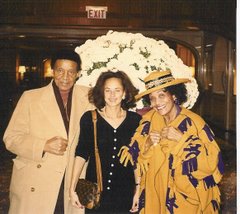
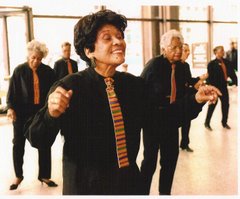
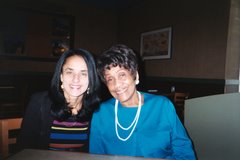

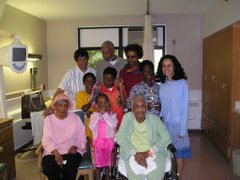

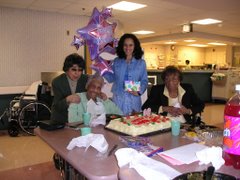




.jpg)